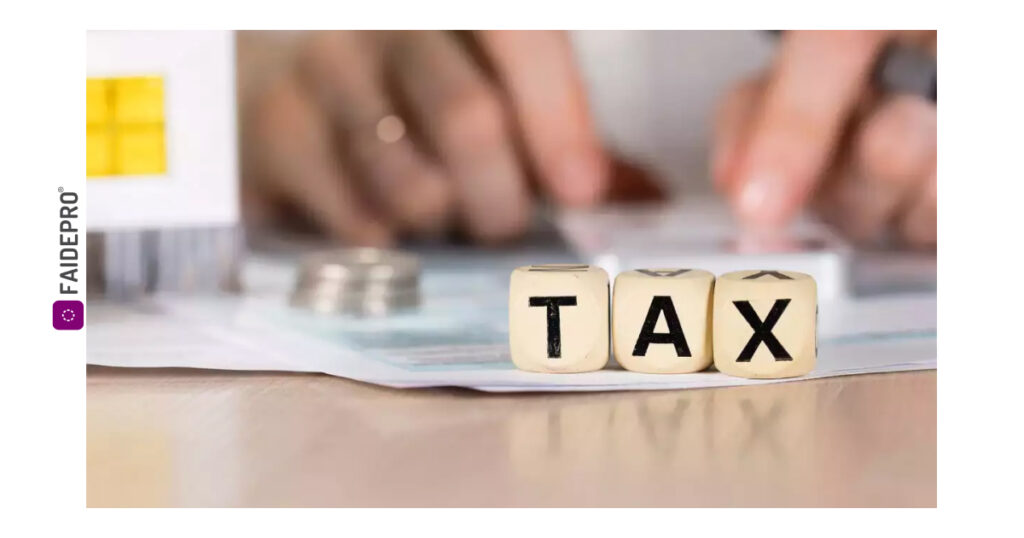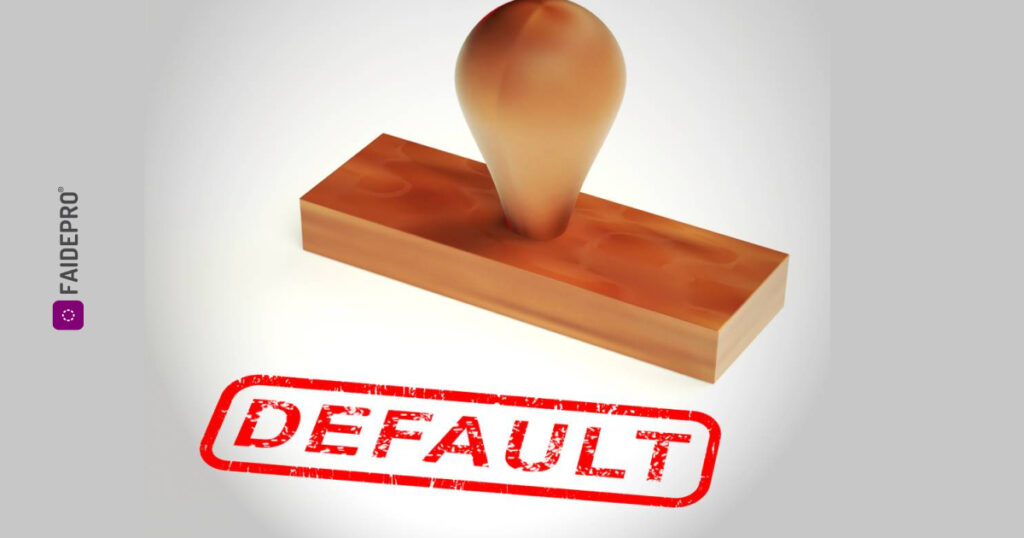- WHAT DOES FORM 26AS MEAN?
Form 26AS is a cumulative account of the taxes you have already charged and any refunds owed to you for the current fiscal year. The statement is available for download on the IRS website (or the TRACES website – a comprehensive step-by-step guide is included later in this article). Taxes deducted at source, taxes paid at source, information about high-value transaction deductions, advance taxes, and tax deducted for property selling, among other deductions, are all included on the form. Form 26AS is the single source of knowledge about all of your income tax deductions. It’s crucial to have Form 26AS on hand when filing your taxes, and not only because it simplifies the process of obtaining tax credits. Since it also lists the deductors, Form 26AS serves as evidence of the TDS deducted by your buyer, bank, or employer.
You must double-check that the declarations on Form 26AS correspond to all taxes you have paid. The TDS amount claimed in your tax return and the TDS amount revised in Form 26AS must match. Any discrepancies between the information on Form 26AS and your tax returns can result in an investigation. We cover everything you need to know about Form 26AS, including its sections, where to find it, and how to download it, in the guide below. You can also reach out to our CA services for tax for help.

- What information is used in Form 26AS?
The Income Tax Department used to collect details such as cash deposits/withdrawals from savings bank accounts, sale/purchase of immovable property, time deposits, credit card payments, purchase of bonds, debentures, foreign exchange, mutual funds, buyback of shares, cash payment for products and services, and so on, according to the Central Board of Direct Taxes (CBDT). Since the financial year 2016, “specified persons” such as banks, mutual funds, institutions issuing bonds, registrars or sub-registrars, and others have been collecting information from individuals who have engaged in high-value financial transactions under Section 285BA of the Income-tax Act, 1961.
“All such details under various SFTs will now be displayed in the new Type 26AS,” it said. Filers are required to provide a Statement of Financial Transaction for defined transactions during the financial year to the income-tax authority or any other designated authority under Section 285BA of the Income-tax Act.
In their SFTs, banks and other prescribed reporting financial institutions record transactions involving cash deposits totalling Rs 10 lakh or more in a financial year, in one or more accounts (other than a current account and time deposit), cash payments totalling over Rs 1 lakh made by any individual, and payments of bills totalling Rs 10 lakh or more by a person in a financial year.
SFTs will also record a person’s investment in bonds/debentures, securities, mutual funds, and buybacks of shares worth more than Rs 10 lakh in a financial year, as well as the purchase or sale of immovable property worth more than Rs 30 lakh.
- What’s in store for the rest of the journey?
In the future, the tax department will have more auto-filled financial transaction information in income tax returns (ITRs). For example, Form 26AS will currently reflect details of a property sale/purchase, but with auto-filled details in ITRs, the taxpayer will be able to see an estimated amount of tax based on the applicable tax rate.
“As time goes by, all knowledge will be gathered and presented in one location. As a regular taxpayer, any economic operation that generates a benefit, whether it’s all in one spot, would stick in my mind while I’m filling out my tax return. It’s like a tick box where you can keep ticking if anything is right or needs to be changed. It will make it easier to file a proper return, and once it is completed, the correct taxes will be charged. And where is the issue of any investigation until the right taxes are paid? Only the mismatch will be scrutinised. And if it appears as well, it can be explained in the same way. As a result, there will be less litigation because the number of disputes will be reduced,” said CBDT Chairman PC Mody.
This was also mentioned in last year’s Budget, which was presented in July, when Finance Minister Nirmala Sitharaman stated that taxpayers would be able to obtain pre-filled ITRs that will include information on salary income, capital gains from shares, bank interests, dividends, and other tax deductions, making the filing of correct tax returns easy. Banks, stock exchanges, mutual funds, EPFO, state registration offices, and other institutions will be contacted for information on earnings and TDS. If it is related to business, you can reach out to CA services for business for more information or doubt clarification.
- THE SECTIONS IN FORM 26 ARE AS FOLLOWS:
-Tax deducted at source and the deductors’ information
-Advance tax information, as well as self-assessment tax information
-Refunds of taxes
-Details of Annual Information Report (AIR) and high-value transactions
-Details on taxes deducted on land sales or other high-value purchases, among other things.
- Tax information obtained at the source
PART A: COMPONENTS OF FORM 26AS Source-deducted tax (TDS)

This section includes information about tax deductions, such as those made by your employer on your wages, by your bank on interest income, by your pension, or by your rent. If you receive a monthly rent of more than Rs.50,000, the occupant is allowed to deduct tax at source before paying you the rent. This information will appear on your Form 26AS as well. This section also includes the deductors’ details, such as their TAN and the sum deducted and deposited.
Part A1: TDS for Form 15G/Form 15H
These details are collected in this portion of Form26AS when a taxpayer submits Form15G or 15H to avoid TDS from being deducted. You will see ‘No transactions current’ if you do not request Form 15G or 15H or if it does not apply to you.
Part A2: TDS on Immovable Property Sales under Section 194 (IA) (for the seller)
TDS must be deducted from the sum charged when you sell a flat, office, or plot. In this portion, you’ll find the TDS on your property sale.
Part B: Taxes Paid at the Source (TCS)

TCS, or tax collected at source, is detailed in this section. This is received at the time of sale by the seller of listed goods. The seller’s TAN will also be included in this section.
Part C: Taxes paid that are not collected by TDS or TCS, such as advance and self-assessment taxes.

If you have made tax payments in the form of advance taxes or self-assessment tax, this information will appear in this section in addition to TDS or TCS. The challan information for the tax deposited can also be found here.
Part D: Got Refunds

If you’ve collected tax refunds, this section will show you all the information, including the assessment year for which the refund was paid, the date of receipt, the mode of payment, and the sum received.
Part E: Transactions on the Annual Information Return

This segment contains information about all high-value transactions conducted by banks and financial institutions. This data is focused on the Annual Information Returns filed by banks and financers, and it covers transactions such as mutual fund purchases, the acquisition or sale of real estate, and the purchase of high-yield corporate bonds and debentures.
Part F: Tax withheld on immovable property sales u/s194IA (For land purchasers)

You must subtract TDS before paying the seller as a buyer of land. This section contains the details of certain transactions. The TDS that you have deducted and deposited is shown here.
Part G: TDS Defaults (processing of defaults)

In a Form 26AS, nothing is left out. Even the information about defaults related to the processing of tax statements, which is listed in this section, is not included. However, demands made by income tax assessment officers are not included in this section.
- INSTRUCTIONS FOR VIEWING FORM 26AS
- Bank of India
- Axis Bank Limited
- Maharashtra State Bank
- Baroda Bank
- Citibank N.A
- Corporation Bank
- City Union Bank Limited
- ICICI Bank Limited
- IDBI Bank Limited
- Indian Overseas Bank
- Kotak Mahindra Bank Limited
- Karnataka Bank
- Oriental Bank of Commerce
- India’s State Bank
- Mysore’s State Bank
- Travancore State Bank and Patiala State Bank
- The Federal Bank Limited is a financial institution based in the United Kingdom
- Saraswat Co-operative Bank Limited is a cooperative bank based in Saraswat, India.
- Union Bank of India (UCO)
- HOW DO I GET FORM 26AS?
- Go to Income Tax India’s e-filing website and create an account.
- Select ‘Register Yourself’ from the drop-down menu.
- Choose a user class from the list of possibilities (click on Individual)
- Fill in your PAN, name, address, and date of birth.
- After that, fill in all of your contact information. Make sure these are right, since the IT Department will use them to contact you for essential tax-related communications.
- To complete verification, enter the OTP sent to your phone or email.
- If you’ve already registered, go to Income Tax India e-filing and click the ‘Login Here’ button to move on to the next level.
- After clicking on ‘Registered User,’ click on ‘login.’ Enter your User ID (which is your PAN), your password, your date of birth, and the CAPTCHA on the next page.
- You will be taken to a new window after entering your user id and password. Select ‘My Account’ from the drop-down menu on this tab. Select View Your Form 26AS from the drop-down menu.
- To be routed to the TRACES website, click Confirm.
- You can access your Form 26AS once you’ve arrived at the TRACES (TDS-CPC) website. When the dialogue box appears, simply click on the empty box to the left of the dialogue box to make a checkmark appear, then click Proceed.
- Press View Tax Credit once more on the new page that appears on your phone (Form 26AS).
- Select the evaluation year for which you need the form on the new page that appears after you press. Since 2009, 26AS forms have been available.
- After you’ve chosen the evaluation year, you’ll need to decide if you want to download Form 26AS in HTML, PDF, or Excel format. If you’re just going to look at it online, HTML is the way to go.
- To gain access to the document, you must first enter the password, which is your date of birth in the format DDMMYY
- You now have Form 26AS in your hands, which you can use to file your taxes.

Conclusion
The single source of information for all of your income tax deductions is Form 26AS. The statement can be downloaded from either the IRS or TRACES websites. Not only is it important to have Form 26AS on hand when filing your taxes, but it also simplifies the process of claiming tax credits. It also serves as proof of the buyer’s, banks, or employer’s TDS deductions. In the guide below, we cover everything you need to know about its parts, where to find it, and how to download it. The Internal Revenue Service used to collect information including cash deposits and withdrawals from savings bank accounts. SFTs can also keep track of a person’s bond/debenture, stock, and mutual fund investments. There are certain tips to save money on personal IT returns. You can check out on this topic to save your precious money.
Also Read: A Complete Guide to Form 26AS

